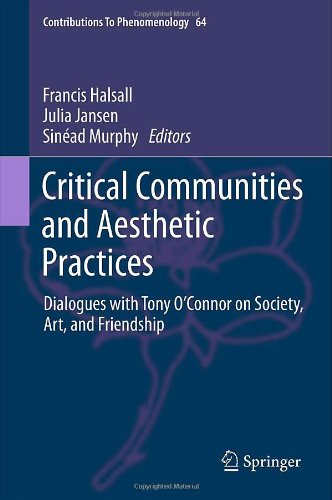

Most ebook files are in PDF format, so you can easily read them using various software such as Foxit Reader or directly on the Google Chrome browser.
Some ebook files are released by publishers in other formats such as .awz, .mobi, .epub, .fb2, etc. You may need to install specific software to read these formats on mobile/PC, such as Calibre.
Please read the tutorial at this link: https://ebookbell.com/faq
We offer FREE conversion to the popular formats you request; however, this may take some time. Therefore, right after payment, please email us, and we will try to provide the service as quickly as possible.
For some exceptional file formats or broken links (if any), please refrain from opening any disputes. Instead, email us first, and we will try to assist within a maximum of 6 hours.
EbookBell Team

4.1
40 reviewsCritical Communities and Aesthetic Practices brings together eminent international philosophers to discuss the inter-dependence of critical communities and aesthetic practices. Their contributions share a hermeneutical commitment to dialogue, both as a model for critique and as a generator of community.
Two conclusions emerge: The first is that one’s relationships with others will always be central in determining the social, political, and artistic forms that philosophical self-reflection will take. The second is that our practices of aesthetic judgment are bound up with our efforts as philosophers to adapt ourselves and our objects of interest to the inescapably historical and indeterminate conditions of experience.
The papers collected here address the issue that critical communities and aesthetic practices are never politically neutral and can never be abstracted from their particular contexts. It is for this reason that the contributors investigate the politics, not of laws, parties or state constitutions, but of open, indefinably critical communities such as audiences, peers and friends.
Critical Communities and Aesthetic Practices is distinctive in providing a current selection of prominent positions, written for this volume. Together, these comprise a pluralist, un-homogenized collection that brings into focus contemporary debates on critical and aesthetic practices.